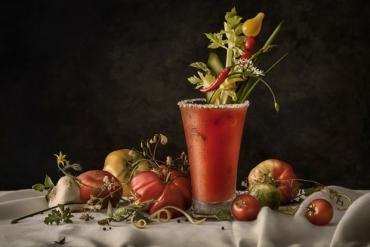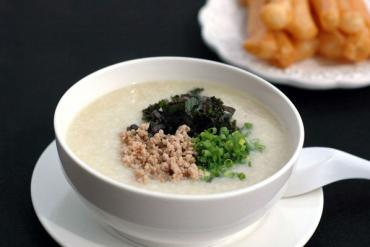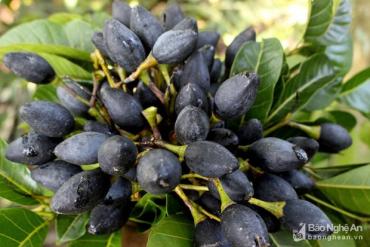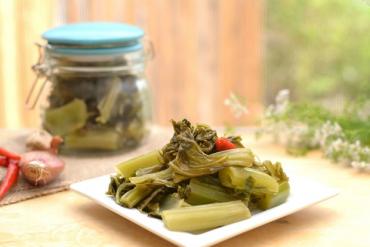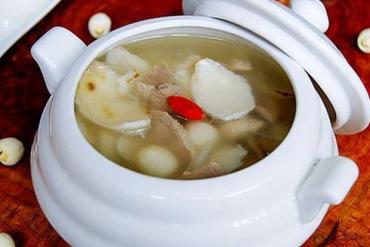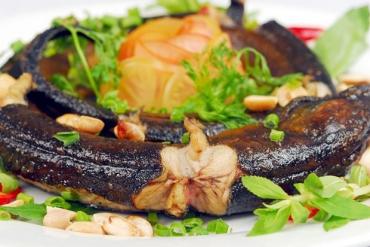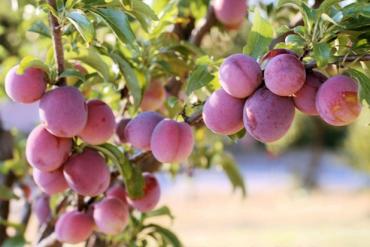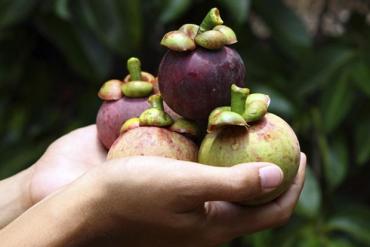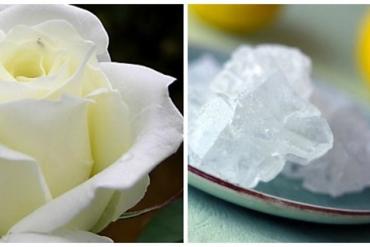- About
- Product
- TAKY
- Coconut Milk Powder
- Bột đơn chất
- Frying Mix Flour
- Vietnamese Cake Flour
- Bột bánh bò 500g
- Bột bánh xèo Cốt Dừa TAKY 400g
- PANDAN LEAF STEAMED LAYER
- TAKYCAKE STEAMED RICE CAKE POWDER
- Bột bánh đúc cốt dừa 250g
- Bột bánh bao 400g
- Bột bánh canh 500g
- Bột bánh bột lọc 500g
- Vietnamese Stuffed Pancake Flour
- Vietnamese Coconut Pancake Flour
- Vietnamese Crispy Pancake Mix (Yellow)
- Vietnamese Crispy Pancake Mix (Blue)
- TAKOKY
- SENTA
- TAKY
- Distribution
- News
- Comments
- Contact
Moringa: From food to medicine
Date 28 month 01 year 2019
Moringa has high economic value, trees are distributed in many tropical and subtropical countries. Plants are not only a source of medicinal herbs but also a very good source of food.
Moringa - Moringa oleifera Lam. Synonyms: Guilandina moringa Lam. Moringaceae Moringa is the best known of the 13 species of the genus Moringa, widely distributed in Africa and Asia.

Describe the tree
Moringa is a small tree, 5 - 10m high. The bark is thick, notched. Young body with fur. Double leaves, staggered, 3 times feather, 30-60cm long, 6-9 pairs of ovate leaflets, opposite, 1.3 - 2 cm long, 0.6 - 1.0cm wide.
Inflorescences clustered in interstitial leaves, bract-shaped bracts, white flowers, somewhat like legume, radios have 5 oblong, curved teeth, 5 spindle-shaped colon, stamens 5, stamens hairy at base, elected sky, one umbrella, hairy. Flower season: April - June.
Fruit season: July - 9. The fruit is brown, triangular, grows sparsely, opening in 3 pieces, 30 - 50cm long or more, 1.5 - 2.5cm wide, containing about 20 seeds in the core. The seeds are light or dark brown with 3 sides and white wings, membrane form, diameter 1 - 1.4cm, length 0.5 - 2.5cm. There are about 3,000 - 9,000 seeds per kilogram.
The bark is gray, white, thick, soft, with many cracks and roughness. When wounded, the bark produces white gum, but later changes to reddish brown or blackish brown under the influence of the environment.
In Vietnam, Moringa bushes grow wild or are scattered in the southern provinces, from Da Nang, Nha Trang, Phan Thiet to Kien Giang and Phu Quoc island. Light demanding and humid tropical climate, tolerant rainfall 750 - 2,200mm, temperature 3-38 (48) degrees Celsius.
Moringa oleifera can live and grow on many types of soil, from basalt red soil in the Central Highlands to sandy clay or on sandy soil of coastal areas. Plants grown with seeds or branches, after two years of flowering.
Moringa usually shed its leaves in the winter or dry season (in the South). Season leaves and young shoots often coincide with the flower season. Due to domestication and long-standing cultivation, Moringa has many different variants. In particular, the most important characteristic to distinguish between varieties is the length and color of the fruit (60 - 90cm and 90 - 120cm). Moringa oleifera cultivated in the southern provinces belongs to the group of short fruits (60 - 90cm).

Chemical composition in each of the moringa parts
Moringa leaves: contain gum and two alcaloid, moringi and moringinin. Flanonoid and phenolic compounds such as kaempferol 3 – O –– rhamnoside, kaempferol, syringic acid, gallic acid, rutin, quercetin 3 – O –– glucoside. The identified flavonol glycosides belong to the kaempferide group that is linked to rhamnoside or glucoside. The glucoside has nitril group: niazirin (I) and niazirinin (II).
Flower Moringa: contains polysaccharides used as an additive in the pharmaceutical industry.
Moringa seeds: containing peptides, separated on cephadex G25 column, 14 peptides have the effect of inhibiting the growth of mushrooms. Extracted with phosphate buffer solution, then ion exchange, isolated protein with amino acid chain including arginine, glutamine and prolin.
Seeds also contain glucosinolate up to 9% after the seeds have been defatted. Carboxylic phenol acids such as 1 –– D – glucosyl – 2,6 – dimethyl benzoate. Fatty oils (20 - 50%): main parts include fatty acids like oleic acid (60 - 70%), palmitic acid (3 - 12%), stearic acid (3 - 12%) and other fatty acids like behenic acid , eicosanoic and lignoceric acid ...
Bark Moringa: contains benzylanin and -sitosterol, gum contains arabinose, galactose, glucuronic acid and rhamnose. From gum, leucoanthocyanin was extracted and identified as leucodelphinidin – 3–0 - D – galactopyranosyl (1 - 4) –0 - D-glucopyranosid.
Moringa root: contains glucosinolate as 4 (-L-rhamnosyloxy) -Benzyl glucosinolate (about 1%) after the effect of myrosinase enzyme will give 4 - (- L-rhamnosyloxy) benzyl isothiocyanate, glucotropaeolin (about 0.05% ) and benzyl isothiocyanate.
Systemic: contains pterygospermin which is resistant to Gram (-), Gram (+) and acidophilic bacteria.

These uses
Plant parts contain many important minerals and are a source of protein, vitamins, - carotene, amino acids and many phenolic compounds ... Isolation of pyrrolemarumine 4 ”–O –– L – rhamnopyranoside and 4 –Hydroxyphenylethanamide from moringa leaves. Determination of crypto compounds - chlorogenic acid, isoquercetin, and astragalin from moringa oleifera leaf by density TLC method. DNA binding properties and FT - IR spectral properties of high SC - CO2 from leaves, roots and moringa seeds.
Moringa oleifera can help improve the diet of people living with HIV / AIDS, as well as medicine and nutrition for HIV-positive patients.
Moringa seeds: reduces pain and reduces fever.
Saponin compound from moringa has a protective effect on the liver and kidney tissue.
Anti-ulcer and antioxidant for alcohol and aspirin of Moringa leaves.
Moringa leaves has components such as flavonoids, hyperosides, rutosides, terpenoids, oleanoic acids, –sitosterols all have antioxidant activity.
Moringa has strong antimicrobial activity against Candida albicans, and Gram (+) bacteria such as Staphylococcus aureus, Enterococcus feacalis and weak activity against Gram (-) bacteria such as Escherichia coli, Salmonella. thyphimurium, Klebsiella pneumoniae and Pseudomonas aeruginosa.
Moringa oleifera seeds in sedimentation, germicidal control in dirty water treatment can be applied to flood areas in Vietnam.
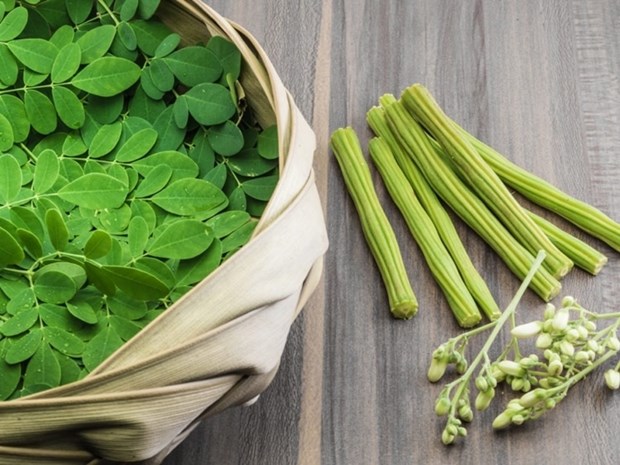
Nutritious
Moringa oleifera contains more than 90 nutrients, substances that play an important role in protecting human health, helping reduce the risk of recession and treating common diseases.
On the other hand, with the ability to be rich in nutrients, fresh Moringa leaves are now considered by WHO and FAO as an effective solution for milk-deficient mothers, pregnant women, malnourished children and weaned children. at the age of 1 - 3.
Indeed, a child under 3 years of age consuming 30 grams of moringa leaf powder daily can provide more than 1 / 3protein, 75% calcium and more than 1/2 of the iron needed for the body. For pregnant and lactating mothers, only need to use 100g of fresh leaves daily is enough to supplement calcium, vitamin C, vitaminA, iron, copper, magnesium, sulfur, and B vitamins needed during the day.
The scientists compared the superior nutritional content of fresh moringa leaf (100g) and typical foods and fruits such as oranges, carrots, milk and bananas on the same weight.
Moringa is widely used in a variety of countries around the world in pharmaceutical, cosmetic, nutritional beverage and functional foods industries.
Developing countries use moringa oleifera as a miraculous medicinal herb, combined with treatment of serious diseases, common diseases and nutritious food: parts of the moringa tree, such as fruits, young leaves, flowers of young branches Can be used as vegetables, but must be cooked.
Leaves stimulate digestion, fruit concentration, used in cooking curry, oil from the lower part makes cooking oil. Moringa oleifera leaves contain many important minerals such as protein, vitamins, -carotene, amino acids and many other difficult compounds found in other plants such as zeatin, flavonoid group (quercetin, isoquercetin, rutin, –sistosterol, caffeoylquinic acid and kaempferol ....) according to "U Eilert, B Wolters, A Nahrstedt, 1981".
Therefore, today it is applied a lot in food by many different uses or create a variety of products such as tea, nutritious drinks, dried moringa leaves ...
Medicine: plant parts such as leaves, roots, seeds, bark, fruit and flowers ... all contain moringinin that stimulates digestion, dysentery, edema, rheumatism, stimulates heart activity and circulatory system, anti-tumor activity, antipyretic, anti-menstrual, anti-inflammatory, ulcerative, anticonvulsant, diuretic, antihypertensive, cholesterol-lowering, anti-oxidant, anti-diabetic, Liver protection, antibiotics and anti-fungal.
Cosmetics: Moringa oleifera is widely used in skin care technology and high-class cosmetics.
Water treatment: Moringa oleifera seeds contain a number of natural "multi-electrolyte" compounds that can be used as precipitates for making in water, and water disinfection is widely applied in rural areas and flood areas like in Vietnam.
According to BS. CKII. Huynh Tan Vu / ĐS & SK
Your comment
Related News
Banh Chung is a traditional food, imbued with national identity, rich in nutrients, indispensable during the Vietnamese New Year’s festival.
Cocktails are a great combination of main wine, liqueur and fruit juice. And recently some scientific studies suggest that women should drink a little alcohol can help boost heart health.
According to Traditional Medicine, remedies from spring onions also call pine silver, spicy, warm air, average calculation, interpretation, neutralization, antiseptic, menstrual, diuretic ... treatment of typhoid, heat ...
In Oriental medicine, Canarium tramdeum is the medicine for many diseases, especially respiratory diseases.
Pickles in addition to delicious food functions, studies show that the health benefits of pickles are good for digestion, can help you lose weight with a variety of healthy antioxidants and may counteract a Number of ...
Lotus seeds have many names such as: Lien Nhuc, Lien Thuc, Lien Me, Lien Tu. In some parts of the world, lotus seed is also considered a symbol of love.
According to Oriental medicine, eel is a delicious food and good medicine, has high nutritional value, sweetness, warmth, non-toxic, tonic liver, spleen, has a cooling effect, laxative, sedative, strong tendon bone, ...
Plums are named lyric, it have contains amino acids: asparagine, glutamine, glycine, serin, alanin, sugar, organic acid, vitamin C ...
Mangosteen is a fruit that is very strange to foreigners, also strange to even some people in Central and North. Ripe fruits have a deep purple color, very thick rind, full of acrid sap - but the intestines are white, ...
According to Oriental medicine, rock sugar tastes sweet, calculates average, into Kinh Ty and Phe. Governmental functions: bổ trung ích khí, hòa vị, nhuận phế, chỉ khái, trừ đàm




